Heather Graham's Blog, page 2
February 12, 2014
Pre-Valentine���s Day Rant
Valentine's Day. Across the country and much of the world, we���ll be
celebrating love. There���s a good reason to celebrate love on this
 day���beyond the fact that we���re helping to keep Hallmark and other
day���beyond the fact that we���re helping to keep Hallmark and othercard vendors in business. (History and theories on Valentine���s Day to
come on Valentine���s Day!)
I just don���t understand quite where we���ve taken it all. Cards are lovely���for any occasion, or when there���s not an occasion. They are a wonderful way to say, ���I���m thinking of you,��� or ���I care.��� And what are the best cards you���ll ever receive? Usually the hand-lettered cards created for you by your children. And these days, perhaps something created by a talented and loving partner on a computer. I���m hoping I don���t lose friends with these words but I���m just not a big believer in a lot that goes on for this day. Dinner together? Lovely. A sitter to watch young children for a few special hours alone? So nice. Do I believe in love? Whole-heartedly. Do I believe that an expensive diamond or other piece of jewelry proves love? Not in any way, shape, or form. There are so many ads out there saying, ���Show her your love with . . . .��� A certain designer���s jewelry. Shopping at a certain jewelry store. Seriously? So far, at least, I haven���t seen anything like, ���Show him you love him with BlahBlah Auction House���s sale of So-and-So���s Superbowl Ring!��� But, I���m a big believer in it being a two-way holiday as well! The best love is always equal. With the world realizing that a loving commitment (be it marriage or a commitment of the heart, be it heterosexual, gay, or lesbian) makes the world go round, I���m surprised we���re not pushing a few other really expensive gifts as well! I���m personally not much of a material girl and those around me are aware of it. I have a tendency to kill flowers way before their shelf date and plants don���t have a prayer with me. (How many people can kill cacti? Thankfully, I fare much better with animals!) Chocolate is okay, especially with nuts, but I think my favorite probably remains a Snickers which can be picked up when desired at the check-out at any Walgreens or CVS. Here���s my argument. Love (I mean the real stuff) can���t be bought. And if I love you, I���m not expecting you to go through your bank account on a gift. Anyone remember ���Love means never having to say you���re sorry?��� Totally disagree! Saying you���re sorry when you mean it is one of the greatest things you can do for someone you love. We all make mistakes. We can all be cruel. Valentine���s Day has become much of what it is here in the United States the same as many another holidays���it���s quite commercial. So, before the big day hits, I���m just sayin��� . . . . It should be about love. Honoring the ���St. Valentine(s)��� who risked his life for love is something good. I just think it should be honored with love���and not fantastic gifts. It should be shared; and not one sided. If love is something shown through an expensive purchase, it���s simply not the emotion that helps us make it through trials and tribulations, death and sickness, stretches of poverty and hunger, and/or all the other bitter strikes in life that can rip us apart. It can also be a day to let parents, children, grandchildren, nephews, nieces, and just special people in your life know that they���re loved as well. (Hallmark and other card vendors have provided for this!)
Published on February 12, 2014 11:37
Pre-Valentine’s Day Rant
Valentine's Day. Across the country and much of the world, we’ll be
celebrating love. There’s a good reason to celebrate love on this
 day—beyond the fact that we’re helping to keep Hallmark and other
day—beyond the fact that we’re helping to keep Hallmark and othercard vendors in business. (History and theories on Valentine’s Day to
come on Valentine’s Day!)
I just don’t understand quite where we’ve taken it all. Cards are lovely—for any occasion, or when there’s not an occasion. They are a wonderful way to say, “I’m thinking of you,” or “I care.” And what are the best cards you’ll ever receive? Usually the hand-lettered cards created for you by your children. And these days, perhaps something created by a talented and loving partner on a computer. I’m hoping I don’t lose friends with these words but I’m just not a big believer in a lot that goes on for this day. Dinner together? Lovely. A sitter to watch young children for a few special hours alone? So nice. Do I believe in love? Whole-heartedly. Do I believe that an expensive diamond or other piece of jewelry proves love? Not in any way, shape, or form. There are so many ads out there saying, “Show her your love with . . . .” A certain designer’s jewelry. Shopping at a certain jewelry store. Seriously? So far, at least, I haven’t seen anything like, “Show him you love him with BlahBlah Auction House’s sale of So-and-So’s Superbowl Ring!” But, I’m a big believer in it being a two-way holiday as well! The best love is always equal. With the world realizing that a loving commitment (be it marriage or a commitment of the heart, be it heterosexual, gay, or lesbian) makes the world go round, I’m surprised we’re not pushing a few other really expensive gifts as well! I’m personally not much of a material girl and those around me are aware of it. I have a tendency to kill flowers way before their shelf date and plants don’t have a prayer with me. (How many people can kill cacti? Thankfully, I fare much better with animals!) Chocolate is okay, especially with nuts, but I think my favorite probably remains a Snickers which can be picked up when desired at the check-out at any Walgreens or CVS. Here’s my argument. Love (I mean the real stuff) can’t be bought. And if I love you, I’m not expecting you to go through your bank account on a gift. Anyone remember “Love means never having to say you’re sorry?” Totally disagree! Saying you’re sorry when you mean it is one of the greatest things you can do for someone you love. We all make mistakes. We can all be cruel. Valentine’s Day has become much of what it is here in the United States the same as many another holidays—it’s quite commercial. So, before the big day hits, I’m just sayin’ . . . . It should be about love. Honoring the “St. Valentine(s)” who risked his life for love is something good. I just think it should be honored with love—and not fantastic gifts. It should be shared; and not one sided. If love is something shown through an expensive purchase, it’s simply not the emotion that helps us make it through trials and tribulations, death and sickness, stretches of poverty and hunger, and/or all the other bitter strikes in life that can rip us apart. It can also be a day to let parents, children, grandchildren, nephews, nieces, and just special people in your life know that they’re loved as well. (Hallmark and other card vendors have provided for this!)
Published on February 12, 2014 11:37
January 11, 2014
Wounded Warriors at Dolphin Research Center
Wounded Warriors Let’s face it—every day we see Americans angry about money and our financial situation. Seriously—what happened? Congress used to serve—not pop in for a few years of hard-headed arguments and then a life time of payment and insurance.
Every day on Facebook I see a post about what people make in disability or pensions—and our soldiers are on the bottom of the pile. Yes, it’s a voluntary military. But, being your basic incredible coward here, I am fall-on-my-knees grateful to the young men and women who serve our country.
This year I was privileged to go on a USO tour. To visit our wounded in hospitals. To see that war doesn’t just kill—it maims and destroys our young men and women.
And, yesterday, I attended the Wounded Warrior program at the Dolphin Research Cente
You have to be hard as nails to watch this and not wind up with tears in your eyes.
 The buses arrive; those at DRC line up with flags to welcome the warriors. And everyone claps as our soldiers go by. Some are limping—some are walking just fine but waving back with prosthetic arms. Some are on two prosthetic legs.
The buses arrive; those at DRC line up with flags to welcome the warriors. And everyone claps as our soldiers go by. Some are limping—some are walking just fine but waving back with prosthetic arms. Some are on two prosthetic legs.And some are in wheelchairs; not even prosthetics will ever let them walk again.
They all seem to have wonderful senses of humor—they have learned to live with their injuries. In other words, they’re still fighters. They’re alive—and they’re going to live.
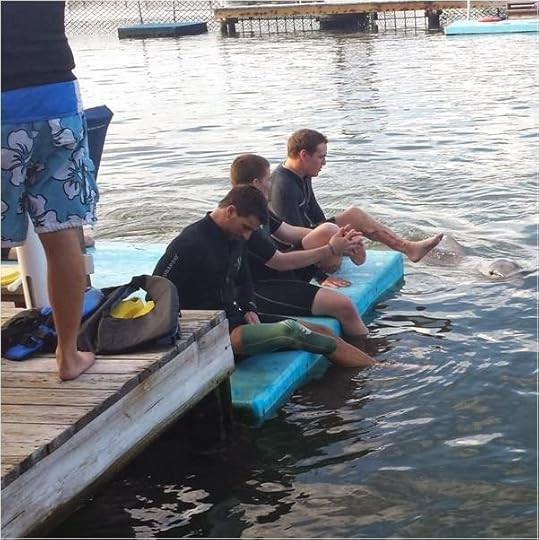 We tried to show one soldier a ramp; he teased back, asking us if we were afraid he couldn't go down the step. He assured us he was a true professional wheelchair driver and he did indeed get his wheel chair to hop down the step with no problem.
We tried to show one soldier a ramp; he teased back, asking us if we were afraid he couldn't go down the step. He assured us he was a true professional wheelchair driver and he did indeed get his wheel chair to hop down the step with no problem. At one of the swim docks, prosthetics were removed and piled on a wheelchair. Two soldiers, each one with one good leg remaining, held up a friend with no legs from the knees down for an interactive handshake with a dolphin. Of course—employees were in the water to help at any minute. But the soldiers are friends—and good together.
 Somehow, the dolphins know that they’re welcoming our wounded home. They come to the soldiers—move slowly on a pull when they need to, move where and when they should. They are
Somehow, the dolphins know that they’re welcoming our wounded home. They come to the soldiers—move slowly on a pull when they need to, move where and when they should. They are
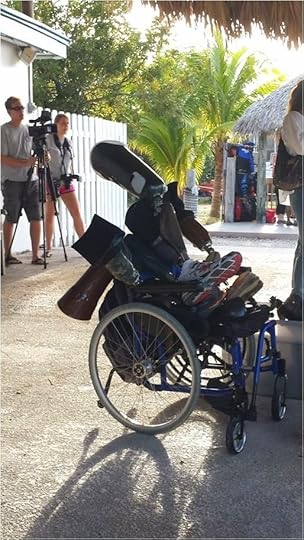 bright animals, instinctive, and they put on a show like no other.
bright animals, instinctive, and they put on a show like no other.When it’s over, the soldiers are still laughing and joking. The prosthetic limbs have all been piled on that wheelchair and it’s time to hand them all back. One teases another when he gets the wrong limb, saying, “Hey. Give a Marine one task and he messes it up!”
There’s a lot of laughter. There’s pride in every branch of the service—but they’re all part of the American military; they’ve gone down many a road that’s the same.
Taking care of our returning military is something that should be of paramount importance. If you see a serviceman or woman, you’d be amazed. Just take two seconds to say thank you to them. Little things can mean so much.
Published on January 11, 2014 09:23
November 11, 2013
USO TOUR
Journal – USO
Day Minus One
I had everything pretty much so ready—packing should have been easy.
It’s never easy and I should know that—the pets always want to help. Well, I have a huge duffel bag and a couple of huge pairs of boots and a huge jacket. That first. Then, logistics! Must have one dress outfit for a dinner—easy. But I’m staying on after the USO portion of the trip in England. I’m going to visit “my people” in Richmond (the Harlequin/Mira offices there) and spend some time at World Fantasy in Brighton. I’m going to need some other clothing but, hey . . . I’ve been to London several times and if I forget something, I really should be fine. Yes, easy enough to buy toothpaste, etc!
Dennis is leaving ahead of me for business abroad. So, first up—get him out of the house. After I get the cat out of the duffel bag.
Note to self—bring a lint remover! (Cat/husky/mutt hair remover!)
Day 1
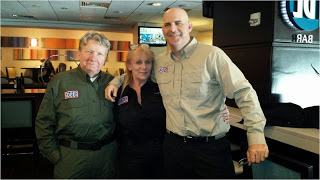 Car picks me up right on time for the airport – and then I’m off. I’m on the only plane without a baggage claim listed but I see Paul Wilson who has come in from New Jersey along with our driver. We head to our hotel and first thing that night, we’re out an on our way to a USO center at the base there. We “meet and greet.” It’s not about our books; it’s about the soldiers who want to talk to us about anything. Some want to become writers themselves. Some want to know about the process. Some are just happy to talk.
Car picks me up right on time for the airport – and then I’m off. I’m on the only plane without a baggage claim listed but I see Paul Wilson who has come in from New Jersey along with our driver. We head to our hotel and first thing that night, we’re out an on our way to a USO center at the base there. We “meet and greet.” It’s not about our books; it’s about the soldiers who want to talk to us about anything. Some want to become writers themselves. Some want to know about the process. Some are just happy to talk.There’s a joke in our family that we always get the room furthest down the hall. Mine is the very last; my co-authors on the tour tease me for being so far away. It’s okay, of course—it’s what I’m accustomed to!
That night we head out to our first center. We talk to those stationed in the DC area—and we listen to them. And the stories are amazing.
And then the next day . . . .
Day 2
Walter Reid hospital. I am immediately grateful that I can make the trek to my room. At Walter Reid, amazing things are done with prosthetics. We fan out—all of us. It’s a little scary. I’m afraid I’ll sit with a soldier who doesn’t want me to sit with him. But we’re there to say thank you and once we start (Kathy Antrim our noble lead!) we are amazed and humbled and grateful all over again. Kathy and I talk with a couple who have both served themselves. In was regular army; she signed up for the guard. Immediately after 911 occurred and the wife’s unit was deployed. They’ve both survived—their two sons and now their daughter have all joined up. Amazing service from one family.
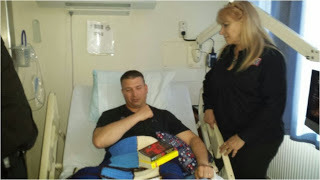 I meet a boy who will not walk again – even with all the amazing physicians and surgeons at Walter Reid can do. He isn’t bitter; he’s just ready to go home.
I meet a boy who will not walk again – even with all the amazing physicians and surgeons at Walter Reid can do. He isn’t bitter; he’s just ready to go home.Another man looks great—nice strong shoulders, cheerful smile. One leg is metal. We also learn he lost pieces of most of his organs including his genitals. He is positive and passionate—and already has amazing programs going that will help other injured men and women move back into mobile lives.
They are from the North and the South and all over the country. They are beautiful. It strikes me that throughout history, we have sent our youth in the prime of their beauty and ability to go forth and fight and die and sometimes come back where they may or may not be put back together.
When we leave Walter Reid, I know that I am blessed to breathe and just to walk—and that I have met some of the greatest heroes whose names you might never know. It would disturb them were I to cry or kiss their feet so I refrain.
I thank God that I can walk the distance to my room. I thank Him that I can walk and
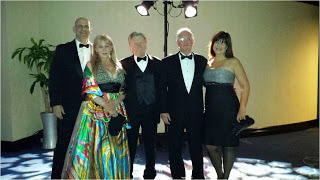 breathe and have all my limbs and I want to knock myself upside the head for anytime I’ve ever complained about a little pain.
breathe and have all my limbs and I want to knock myself upside the head for anytime I’ve ever complained about a little pain.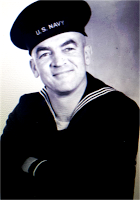 That night, we dress up. We’re there for the gala and we dress up and head down. While we’re amazed by the stories of the men who will receive awards, we also know they’re just the tip of the iceberg on stories regarding courage. I remember that courage isn’t NOT being afraid—courage is knowing fear and acting despite that fear. One of the recipients crawled on his belly to bring back a wounded man despite the heavy fire raging over him. Another jumped into a raging current to save a man and a child—while off duty. I’m privileged to hold the Navy award and walk it on to the stage. It’s happenstance that I drew Navy—we went by alphabetical order—but I was thinking of my dad, Navy Chief Petty Officer. I like to think he was smiling from
That night, we dress up. We’re there for the gala and we dress up and head down. While we’re amazed by the stories of the men who will receive awards, we also know they’re just the tip of the iceberg on stories regarding courage. I remember that courage isn’t NOT being afraid—courage is knowing fear and acting despite that fear. One of the recipients crawled on his belly to bring back a wounded man despite the heavy fire raging over him. Another jumped into a raging current to save a man and a child—while off duty. I’m privileged to hold the Navy award and walk it on to the stage. It’s happenstance that I drew Navy—we went by alphabetical order—but I was thinking of my dad, Navy Chief Petty Officer. I like to think he was smiling from heaven, giving me a nice thumbs-up sign.
Day 3
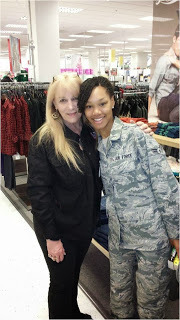 We head out to the base at Quantico. A traffic jam makes us an hour late but it’s lovely—people have waited to see us. I’m fascinated by Quantico—and to meet a real NCIS officer. I am a fan of the show—Navy, you know! We speak to others there—and I’m able to listen to service members and their families, and I get to hold a beautiful baby for a long time, and if you know me, babies . . . dogs . . . kittens. But, mostly, babies! Her dad is between deployments.
We head out to the base at Quantico. A traffic jam makes us an hour late but it’s lovely—people have waited to see us. I’m fascinated by Quantico—and to meet a real NCIS officer. I am a fan of the show—Navy, you know! We speak to others there—and I’m able to listen to service members and their families, and I get to hold a beautiful baby for a long time, and if you know me, babies . . . dogs . . . kittens. But, mostly, babies! Her dad is between deployments. Leaving Quantico, I realize just how many families are touched every day—and wonder every day if a loved one is alive and well.
I’m grateful, too, for my companions. No one could travel with better friends than Kathy Antrim, F. Paul Wilson, Phil Margolin, and Harlan Coben. They are all amazing.That night, we leave for Kuwait.
Day 4
Kuwait.

We now have Jeremy, a seasoned USO guide, to take us where we need to go. A woman in a burka inspects our documents and checks our visas. When I exit the airport—I see a McDonald’s. It’s a bit strange to see Micky D with Arabic letters.
When I’d first been asked on the trip, I’d imagined a tent in the dessert. Our hotel is Italian and very nice.
We meet our security detail—men with us, men in a car in front of us, men in a car behind us. Most Kuwaiti people are just going about their daily lives; they are friends in a sea of discontent. But the country is a little dot in a vast dessert where many fanatics hate western philosophy and therefore, everyone there is eternally vigilant. We travel through areas of vast riches—and then we travel through miles and miles of desert. These are men and women prepared to go “down range” or into action at any time. They come through when they have just finished deployments “down range.”
And here, we get to discover just how much the USO is appreciated and we realize just
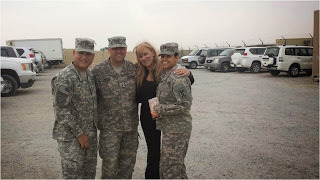 how much they do. It’s not just actors, movie stars, authors, artists or what have you—the center here has gaming for them, books, computers—all kinds of things to do.
how much they do. It’s not just actors, movie stars, authors, artists or what have you—the center here has gaming for them, books, computers—all kinds of things to do.I get the opportunity to speak with a young man who is with a girl who is just 18. They are friends—he from Louisiana, she from Ohio. He’s turned 21; he has a brother serving who is just 23. He told me about signing up; he and his brother had done so the same day. They hadn’t had the nerve to tell their mom. Then they were going to tell her and convince her they both had desk jobs. They didn’t like; they both signed up to be scouts. I asked him what she said when they finally told her the truth. “She cried,” he told me. I could only imagine. I know, however, as well, that she is very proud.
One young soldier came up to me and asked if I’d do him a favor. He had just called home to his girlfriend; she was a reader of my books. I went with him and was able to speak with her on the phone. She is writing herself—I’m going to do my best to help her in any way that I can. I gave her my information and I saw his face and started shaking. I owe him so much. He was grateful to me. There is nothing I can ever to do to compare with what these men and women do.
The base commanders give us a fascinating talk. I have a better understanding—not of
 politics. I’ll never understand politics! But of what is going on and what our men and women do and what they’re expected to do.
politics. I’ll never understand politics! But of what is going on and what our men and women do and what they’re expected to do.At the library, I have to admit to being super excited that they had about twenty-five books in a special audio section of little tiny boxes that are complete—the earphones, the speakers, the book—all are there in a little box! One of mine was represented. I was grateful to whatever powers there were that made that possible.
There are two bases in Kuwait. When I leave them, I thank God that my parents made me a first generation American. They loved the USA. I know that I’ll embarrass myself kissing the ground when I come home.
Day 5
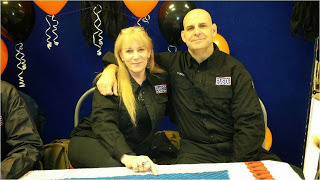 An over-nighter brings us to Ramstadt, Germany. We stay at an Air Force hotel where many of our men and women—coming and going and being reassigned—are staying, too. This is nice—so many chances to say thank you! We have time to stay at the USO center there and meet so many people. It’s wonderful. Then, we move on into the hospital. We’re wordsmiths—and yet it’s almost impossible to describe the feelings that come to you there. One soldier down the hall—is a Croatian but joined our army. A bullet nicked his neck; he is here because it’s the best possible place for him. Right now, he is paralyzed. A family member is there to take him home when the time comes.
An over-nighter brings us to Ramstadt, Germany. We stay at an Air Force hotel where many of our men and women—coming and going and being reassigned—are staying, too. This is nice—so many chances to say thank you! We have time to stay at the USO center there and meet so many people. It’s wonderful. Then, we move on into the hospital. We’re wordsmiths—and yet it’s almost impossible to describe the feelings that come to you there. One soldier down the hall—is a Croatian but joined our army. A bullet nicked his neck; he is here because it’s the best possible place for him. Right now, he is paralyzed. A family member is there to take him home when the time comes.One of the most gratifying moments for all of us comes then—a soldier has been waiting, notebook in hand—to talk to us all. He is working on a fantasy novel and has maps drawn of his world. The story is really excellent and we’re all ready to help him.
One soldier was in for a minor operation and he was charming. He was wearing his USO quilt. I learned again just how much the USO does and I’m grateful to be allowed to be a part of it for my few days.
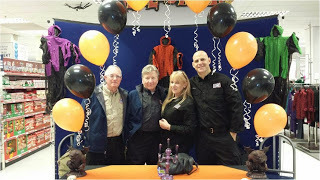 One soldier has a brain injury and is learning to speak again. There’s magic in the air; not one of us had a problem understanding him.
One soldier has a brain injury and is learning to speak again. There’s magic in the air; not one of us had a problem understanding him. That night, we head out to the base library. There are actually thousands of Americans living here; it is, in fact, the largest conglomeration of Americans living outside the United States anywhere. Servicemen and women and their families arrive; there’s a group there of writers. It’s wonderful to talk to all of them and we hope, each and every one of us, that we’ve helped and that we’ll have more programs in the future to help even more.
Day 6 and 7
We arrive late, check into the base, grab some dinner, and sleep.
Jolly Old England and Mildenhall
While the world grows smaller and smaller in many ways, we’re still across a giant pond and many of our men and women begin a trip out to battle zones through Ramstadt and the RAF base here. The stories we hear again are amazing.
At the library, we meet a Colonel who is a huge fan of Harlan; we also hear her story. Her
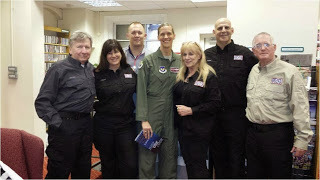 husband is there; he was military for many years, too. She’s a flyer—they met when he was guarding her plane. He served a long time but now he’s out—she’s still flying. They are charming and so happy together. He jokes that when it came down to it, she was the one who needed to stay in. She outranked him; now he teases that she still seems to outrank him at home. They both appear to be confident and sure of themselves and not in the least concerned with who outranks who.
husband is there; he was military for many years, too. She’s a flyer—they met when he was guarding her plane. He served a long time but now he’s out—she’s still flying. They are charming and so happy together. He jokes that when it came down to it, she was the one who needed to stay in. She outranked him; now he teases that she still seems to outrank him at home. They both appear to be confident and sure of themselves and not in the least concerned with who outranks who.At lunch we scatter and meet more soldiers, those coming and those going, and those who remain where they are repairing planes, working on computers, and doing whatever else needs to be done.
Our last official function ends that night—we head to a local pub for our goodbye meal with Jeremy, Fred, our amazing photographer, and one another. Harlan had arranged for a car to take him into London so Paul and I, due at World Fantasy Con in Brighton next day, hitch a ride with Harlan into London; the next morning, Kathy, Phil, Fred, and Jeremy head home.
Jeremy and Fred were wonderful. I miss them already. I hope I’ll see them again.
I know that Paul, Kathy, Phil, Harlan, and I will always be friends. We’ve formed a little family that comes from the experiences we shared. Unlike any other.
I take it personally. That job is being the front line that protects me. While we squabble at home, the thing is this—we’re allowed to squabble. We’re allowed to complain. We speak our minds. I have the right to strive to attain goals. I am an equal citizen.
All these gifts are mine because of the men and women who fight to protect me and my rights.
I hope I did something for someone.
I know that they did an amazing thing for me—they changed my life. I am eternally grateful.
Published on November 11, 2013 11:11
May 23, 2013
30 Days of Why I Love New Orleans - Day 30
The Hotel Monteleone and Writers for New Orleans The tale of the beautiful Hotel Monteleone began in the city—and far away, in Sicily. That’s where Antonio Monteleone was born. He’d heard great stories about America and the
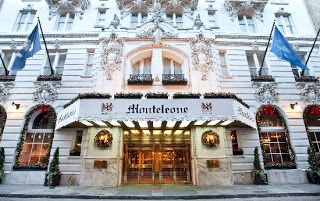 American dream and decided he wanted to come to this country. He settled in New Orleans—considered to be America’s most European city, which of course, since it had been under French rule, Spanish rule, and American rule—not to mention that those nationalities had been joined by the Brits and others who had wandered in. Antonio arrived sometime around 1880. He opened a cobbler’s shop on Rue Royale and prospered.
American dream and decided he wanted to come to this country. He settled in New Orleans—considered to be America’s most European city, which of course, since it had been under French rule, Spanish rule, and American rule—not to mention that those nationalities had been joined by the Brits and others who had wandered in. Antonio arrived sometime around 1880. He opened a cobbler’s shop on Rue Royale and prospered. He loved his new city.
So, when a hotel became available in 1886 in the Vieux Carre that he loved so much, he bought it. It was on the corner of Royal and Iberville and had 64 rooms. He did well with his hotel. He soon bought a nearby hotel, the Commercial Hotel. By 1903, he was adding more rooms.
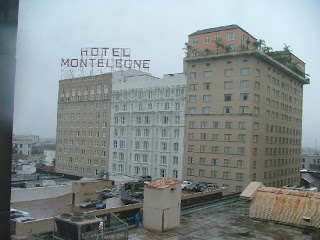 When he passed away, his son added even more rooms. Neither financial panic nor storms nor any other hindrance, natural or other, swayed the grand hotel. After his son, his son’s son took over—and that’s what has happened to this day.
When he passed away, his son added even more rooms. Neither financial panic nor storms nor any other hindrance, natural or other, swayed the grand hotel. After his son, his son’s son took over—and that’s what has happened to this day. After the “summer of storms” had gone through NOLA and the levees broke and disaster struck the city, there were hard times. Somehow—and it still boggles my mind—we could drop newscasters on bridges—and food and water all over the world—but still had a hard time saving way too many of our American people. But NOLA is a tough old grand dame. I was there the weekend before Katrina struck Miami and then moved on across the Gulf and I returned to the city as soon as I could after the disaster. It was a wretched summer; right after Katrina, Rita and Wilma came on through.
The people of the city were strong. But it was while I was with a friend who owned one of the carriage companies that Writers for New Orleans was born. She told me how grateful residents were for the people of our country—not governments or parties, but the people. And still, what they needed was not handouts after the worse, but work. To get back to work, the carriage drivers, hoteliers, bar owners, musicians, artists—all—needed tourists back in the city. And she mentioned, “You’re a writer; maybe you could get some writers to come.”
Ah, yes. We could put together a conference. So, okay, a writer’s conference. What kind of a writer’s conference? What would make people come?
Okay . . . any kind of writers! Fiction, non-fiction, mystery, horror, sci-fi . . . poetry.
What if we couldn’t get enough writers?
Well, then, we’d just have to have readers.
And what if that wasn’t enough?
Hm. We’d try to throw a few good parties!
So, with Connie Perry and my carriage-driving friend, Writers for New Orleans came into being. Having decided that we were going to have a conference, we needed a place. And that place needed to be a local hotel. Sheraton was going to take care of Sheraton just as Marriott would take care of Marriott—nothing against the chain hotels; I love many. But we wanted a local hotel.
I had just lost my sister, Vickie, the summer before. She’s the one who had come to Jazz Fest as long as I could remember. She loved the Monteleone.
We headed there.
And we’ve there for eight years.
I love the Monteleone. I love that it’s been owned by a single family for so many years, and I love that the employees there are people I see again and again. I heard great stories from those I worked with about the assistance given to the employees when they were devastated after the storm—they were, if strapped when the hotel was closed, handed checks for electric and other necessities. I have loved their banquet crews and the management we work with. Every year, it’s really like coming home.
Rather sad, but when we went there, I wasn’t aware of the hotel’s literary credentials. (You think I might have gotten this when I realized there were rooms available such as the “Tennessee Williams Suite” and the “Eudora Welty Suite.” The hotel is one of only two others in the country—those being the Algonquin and the Plaza in NYC—recognized as
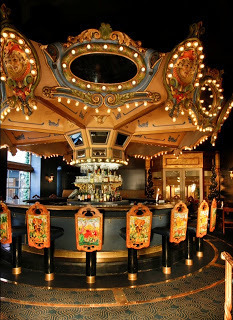 “Literary Landmark Hotels” by the by the Friends of the Library Association.
“Literary Landmark Hotels” by the by the Friends of the Library Association. Tennessee Williams did indeed stay here; 214 Royal was his favorite address in the city. William Faulkner wrote here. Truman Capote liked to tease that he was born at the hotel. Actually, his mom made it to the hospital, but she had been staying at the hotel.
There’s so much to love. The lobby is beautiful and ornate. Entering from the street, if you make an immediate right, you’ll be at the Carousel Bar. The carousel was installed in 1949. The bar itself came about because performers—like Louis Prima!—enjoyed meeting friends and enjoying a cocktail after performing.
The pool is on the roof. It’s a lovely place to go, sit, soak in the sun, cool off from the sun, and enjoy a bird’s eye view of the surroundings. There are meeting rooms—like the
 Riverview—that look over the Mighty Mississippi. There are ballrooms that are truly beautifully designed and decorated.
Riverview—that look over the Mighty Mississippi. There are ballrooms that are truly beautifully designed and decorated.And the food—even for banquets!—is delicious.
When people come here, they never want to leave. Aha! That leads to another draw. The hotel is haunted. (Naturally, right?) Several paranormal groups have carried out investigations here and found definite “haunted” activity. An employee died here of natural causes and he’s still around, walking the halls, checking up on the guests. Sometimes, you can hear children’s laughter in the hallways, even though there are no children. While these merry lads and lasses did not die here, it’s speculated that they had such a great time while staying at the Monteleone, that they returned to play.
If you’re interested, we stick to our original plan—Writers for New Orleans happens yearly at the Hotel Monteleone at 214 Royal Street. It’s for all writers, all readers—and/or friends who just want to tag along for fun. Our registration fee is strictly kept at cost—the idea remains to bring people into this incredible city so that they can fall in love, too—and so that more and more people can understand how unique and precious New Orleans is to our very unique and precious country!
Of course, any time you come, you might want to stay at the Monteleone. And if you can’t stay, at least pop in for a cocktail or soda at the Carousel Bar and see the beautiful lobby. Privately, family-owned for over a hundred years—if it weren’t for the fantastic beauty and incredible beauty, that alone would be a reason to come!
Published on May 23, 2013 22:47
May 22, 2013
30 Days of Why I Love New Orleans - Day 29
Everybody’s Got an Opinion So . . . I love New Orleans, which is pretty evident. I’ll never know exactly what made me so very passionate about the city. Is it the history—is it a real mystique, or something that we’ve
 given to it.
given to it.More than anything, I think it’s the way that Nola manages to be a city of living history. People live out their lives in homes where others tread before, dealing with the tragedy of the Civil War, slave markets, Civil Rights, and more. Restaurants are places where those creating the eras that came before us dined and talked and voiced their own opinion about “current” political situations that shaped the nation we live in now. Since the summer of storms, the city is more international than ever. Everyone is welcome in NOLA—Southern hospitality abounds. There’s the “decaying elegance” of bygone times; there is the good and the bad—an outlook that is resilient and hopeful for the future. There are the cemeteries where the past seems to seep right into your skin and Jackson Square where you see the performers, hear the performers, and the wonderful laughter of the children. Ghost stories in carriages as you listen to the voice of your guide . . . and the clip-clop of the mule’s hooves. So, coming almost to the end here, I’ve asked a few of my children and friends to give me their opinions of this amazing city. There’s usually something that draws everyone, and for everyone, that something is just a little bit different.
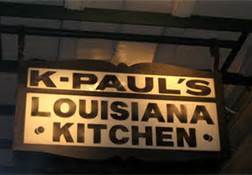 From Jason Pozzessere (my son and co-author of A Child’s Cry, Cast of Characters) When in New Orleans there are three main attractions that most people just can’t get enough of. Bourbon Street, with its wide array of bars, club, and restaurants is a sure bet for a crowd pleaser. Second is the art, it is everywhere, and you can find beautiful works in galleries, shops, hotels,and even on the streets. But the third, and most important one--in this foodies humble opinion--is the food!
From Jason Pozzessere (my son and co-author of A Child’s Cry, Cast of Characters) When in New Orleans there are three main attractions that most people just can’t get enough of. Bourbon Street, with its wide array of bars, club, and restaurants is a sure bet for a crowd pleaser. Second is the art, it is everywhere, and you can find beautiful works in galleries, shops, hotels,and even on the streets. But the third, and most important one--in this foodies humble opinion--is the food!From K Paul's, to the World Famous Acme Oyster House, there is plenty to find that is sure
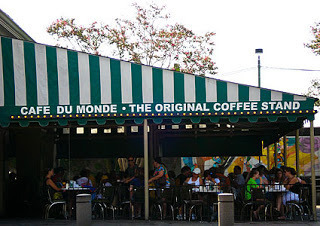 to please. But nothing beats a late night round at the Original Cafe Du Monde when one needs a respite from a fun night on the town or a crazy all night bender.
to please. But nothing beats a late night round at the Original Cafe Du Monde when one needs a respite from a fun night on the town or a crazy all night bender.Since 1862 this French Market Original has been serving tasty treats to folks that have no known equal in the modern world. From its scrumptious food specialty, the French beignet, to its perfect partner in crime, a steaming glass of Chicory coffee, the cafe is sure to please just about everyone with working taste buds.
You also never know when you might catch a show, as the locals often times burst out into spontaneous song, or perform a little "reality drama" right in front of you. And have no fear for your safety, as some of New Orleans' finest can be found there taking a breather from a hard night on the streets at just about any time of day.
So if you find yourself in the mood for a great snack head on down on your next visit. I love it, and my moneys on the bet that you will too!
 From Connie Perry (Organizer extraordinaire of Writers and Louisiana native) One of the reasons I love New Orleans is because it is a part of me, part of my heritage. I was born and raised in Louisiana, although it was in a different city, it really doesn’t matter. Louisiana is one of the greatest states in America. We may be one of the smaller states, but our state offers a myriad of opportunities to all. Our state and New Orleans have a flavor all of their own. All you have to do is come on over to visit and you too will be enchanted by the people, culture and some of the best food on this planet. Ah, but my favorite thing? My son lives in New Orleans. And my best friend comes to visit several times a year. The memories we share are priceless!
From Connie Perry (Organizer extraordinaire of Writers and Louisiana native) One of the reasons I love New Orleans is because it is a part of me, part of my heritage. I was born and raised in Louisiana, although it was in a different city, it really doesn’t matter. Louisiana is one of the greatest states in America. We may be one of the smaller states, but our state offers a myriad of opportunities to all. Our state and New Orleans have a flavor all of their own. All you have to do is come on over to visit and you too will be enchanted by the people, culture and some of the best food on this planet. Ah, but my favorite thing? My son lives in New Orleans. And my best friend comes to visit several times a year. The memories we share are priceless! From Erin McCarthy (USA Today bestselling author of True, a new adult novel, and many
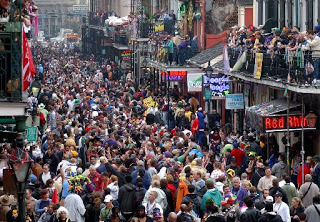 more!)
more!)I love New Orleans because of the joie de vivre of both the locals and the tourists... how it's a city that embraces the philosophy of live and let live. The deep sense of history, the amazing food, and the wonderful music all draw me back to NOLA again and again!
From Chynna Pozzessere (daughter and hard-working L.A. actress.) Uptown—While a lot of people love the French Quarter, I love Uptown. The area has a great neighborhood feel, wonderful coffee shops, and a real sense of community. I also love
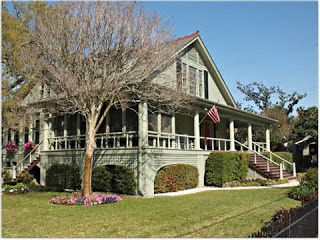 the cigar shop in the alley by the Monteleone—lots of friends have worked there!
the cigar shop in the alley by the Monteleone—lots of friends have worked there!From Kathleen Pickering (author of When We Began and more! Kathy’s family owns a jewelry store—she is our expert!) I'd never been to New Orleans until I attended Heather's first Writers for New Orleans conference eight years ago. Returning to New Orleans--and Heather's conference--has been an annual love affair for me ever since. New Orleans is vibrant with history, character and a passion for living that reaches a body through the city's diverse culture and heritage. Locals are delightful. Food is amazing. Music is as abundant as the breeze and keeps you dancing down the sidewalk with a smile on your face. Oh, and did I mention the jewelry and antique stores? Beignets and chicory coffee? Reasons enough to return each year! Thank you, Heather for choosing New Orleans as playground for writers. The city offers inspiration around every corner, indeed!
I was truly interested in myself in everyone’s answers—because, as I suspected, there’s not really just one thing—or perhaps it’s everything. New Orleans offers its own unique ambience; yes, it is the architecture, the history, the beignets, the laissez faire, the old and the new, and maybe, especially, it’s a piece of America that is just as special as we are as a
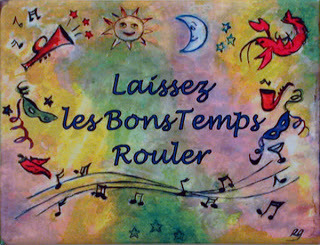 people—a beautiful part of the puzzle that’s the American dream.
people—a beautiful part of the puzzle that’s the American dream. Maybe, sometimes, it’s because there’s nowhere else you can get such wonderful cheese grits! Ah, you never really know. But you may just find yourself falling in love with NOLA anyway.
Published on May 22, 2013 00:11
May 20, 2013
30 Days of Why I Love New Orleans - Day 28
Lagniappe The word lagniappe actually entered the world through the Louisiana French who adapted it from the Spanish Creoles who came to New Orleans who adapted it from a Quechua word. Confusing? It originated from lapay, which sounds like a slangy version of “you pay.” It means just the opposite. It means a little something for nothing, or a little something extra. It’s very nice. Lagniappe is all the little extra wonderful things about New Orleans. There really so many things to do in New Orleans; it would take a massive travel book to begin to point them all out. But today’s the day to mention a few I’ve missed. A few more of the wonders to be found in NOLA. We’ll start with the steamship Natchez. Some people call it Natchez 9. That’s
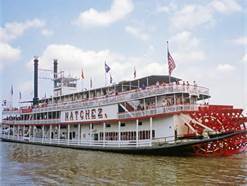 because there have been many ships called the Natchez. The one you can board now in New Orleans was actually built in 1975. Her pieces come from earlier years, however. Such as her steam engines which were built for the Clairton in 1925. Her whistle is an antique, and her calliope was hand produced just as the calliopes of old. Her steel-and-copper bell was produced from 250 silver dollars—I’m not really sure how a copper bell was made from silver dollars “for purity of sound,” but that is the case.
because there have been many ships called the Natchez. The one you can board now in New Orleans was actually built in 1975. Her pieces come from earlier years, however. Such as her steam engines which were built for the Clairton in 1925. Her whistle is an antique, and her calliope was hand produced just as the calliopes of old. Her steel-and-copper bell was produced from 250 silver dollars—I’m not really sure how a copper bell was made from silver dollars “for purity of sound,” but that is the case.Hop aboard for a cruise that can include different meals and entertainment, and the sense of what it was like in days of old, traveling the city by the mighty Mississippi. Great views can be obtained, and to me, true perception of the river. The Mississippi is mighty and powerful.
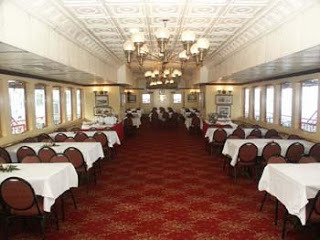 We hopped aboard the Natchez for Writers for New Orleans once and had a great time; it was a costume party with a jazz band on one level and karaoke on another—fantastic food and a beautiful night on the river. Having seen the play Show Boat and then the musical with Howard Keel, I was anxious to actually get aboard a steamboat. The Natchez doesn’t disappoint—hop aboard! Naturally, you can find the Natchez at the river. The ticket office can be found at Toulouse and the river. Walk the river—yes, of course, there’s a river walk. If you’re not going to cruise, it’s great just to walk the walk—and watch the great big muddy Mississippi. Also, there are the Riverwalk Shops and the Riverwalk Marketplace. (500 Port of New Orleans Place.) While you’re heading that way, you could
We hopped aboard the Natchez for Writers for New Orleans once and had a great time; it was a costume party with a jazz band on one level and karaoke on another—fantastic food and a beautiful night on the river. Having seen the play Show Boat and then the musical with Howard Keel, I was anxious to actually get aboard a steamboat. The Natchez doesn’t disappoint—hop aboard! Naturally, you can find the Natchez at the river. The ticket office can be found at Toulouse and the river. Walk the river—yes, of course, there’s a river walk. If you’re not going to cruise, it’s great just to walk the walk—and watch the great big muddy Mississippi. Also, there are the Riverwalk Shops and the Riverwalk Marketplace. (500 Port of New Orleans Place.) While you’re heading that way, you could
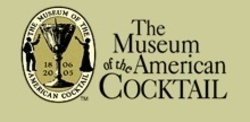 stop in at the Southern Food and Beverage Museum. (The Museum of the American Cocktail just found new digs and is in process of moving as I write!)
stop in at the Southern Food and Beverage Museum. (The Museum of the American Cocktail just found new digs and is in process of moving as I write!) Are you a gambler? Harrah’s is there, large, in Mardi Gras style, and offering everything from slots to poker to craps and roulette, fine restaurants, and a very nice hotel. Harrah’s can be found easily at Canal Street—you wouldn’t want to hide a big Casino! Convenient and offering changing exhibits is the Historic New Orleans Collection.
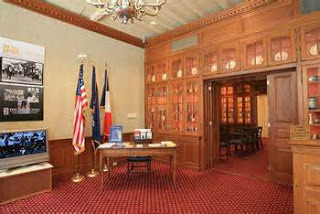 This museum is dedicated to New Orleans and Louisiana. Artifacts chronicle life, art, music—you name it—in the city of New Orleans and the surrounding environs. You can find events happening here—life, art, music—you name it—and ever-changing special exhibits. Since the Historic New Orleans Collection is easily found at 533 Royal Street. You can make a great day of shopping, browsing—and enriching your sense of the city and history by stopping in. The last time I visited, the exhibits gave the visitor a great sense of day to day life in the area during the mid 1800s. Ladies gloves, gentlemen’s pursuits, all displayed thoughtfully and artistically in handsome displays.
This museum is dedicated to New Orleans and Louisiana. Artifacts chronicle life, art, music—you name it—in the city of New Orleans and the surrounding environs. You can find events happening here—life, art, music—you name it—and ever-changing special exhibits. Since the Historic New Orleans Collection is easily found at 533 Royal Street. You can make a great day of shopping, browsing—and enriching your sense of the city and history by stopping in. The last time I visited, the exhibits gave the visitor a great sense of day to day life in the area during the mid 1800s. Ladies gloves, gentlemen’s pursuits, all displayed thoughtfully and artistically in handsome displays. Hopping over to Algiers for the day is intriguing. Algiers is on the west bank of the Mississippi and is actually the “15th” ward of the city of New Orleans. (There are 17) Algiers can be reached by the Canal Street Ferry. The area has had its ups and downs through the
 years and has a rich history all its own. Now the area offers pleasant shopping and browsing. A number of Mardi Gras “krewes” maintain warehouses in Algiers for their floats and costume materials and supplies. There are beautiful late 1800s churches and libraries here, along with the shopping. When the Confederate army left Algiers behind when the Union was about to take over, they destroyed any arms, munitions, and supplies, not wanting them to fall into Union hands. Most of the area was burned and most buildings there were obviously
years and has a rich history all its own. Now the area offers pleasant shopping and browsing. A number of Mardi Gras “krewes” maintain warehouses in Algiers for their floats and costume materials and supplies. There are beautiful late 1800s churches and libraries here, along with the shopping. When the Confederate army left Algiers behind when the Union was about to take over, they destroyed any arms, munitions, and supplies, not wanting them to fall into Union hands. Most of the area was burned and most buildings there were obviously
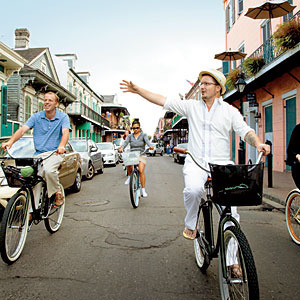 constructed post-Civil War.
constructed post-Civil War. Have some energy and want to cover some space? You can head to 1815 Elysian Fields and to Confederacy of Cruisers. Bike around the city on a Schwinn with a guide who will give you all the ins and outs. Depending on your mood and desires, you can see the city in dozens of ways; tour companies abound. By carriage, by motor vehicle, by bike—and by Segway! Now, there’s a fun challenge. Learn to balance and see the city at the same time. You can also go up in a plane for a tour—Big Easy Tours can give you a bird’s eye view of the city. I’ve had friends who have loved it—pricing is around $250 a person. (I can’t personally attest to this one; too chicken for small planes I don’t have to be on!) You can also book a Hurricane Katrina Tour. This will take you to the 9nth Ward where, to this day, residents are trying to put back the pieces from the flooding after Katrina and the devastating summer of storms. While it’s humbling and heart-breaking to hear many of the stories, it’s also uplifting to see the resiliency to be found in the human soul—and the energy put in by so many people to bring back all that was broken. We are a great nation. So, you’re worn out and tired. You’ve biked or Segway-ed, walked, listened, learned
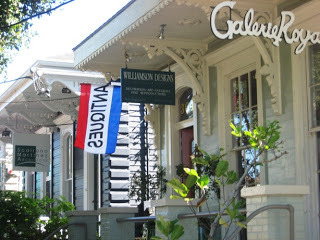 —seen. Take a little jaunt to Magazine Street. You’ll find wonderful and unique shops that will grab your attention even if you’re worn out. You’ll also find some of the most wonderful bars and restaurants in the city—places to chill after a long day of loving New Orleans. During the day I’m particularly fond of Artz Bagelz (3138 Magazine.) For dinner, I suggest Domenique’s on Magazine, 4213 Magazine. You can also find great coffee, chocolate, desserts . . . trust me. It’s just a nice place to be. You’ll find something that will make you very happy!
—seen. Take a little jaunt to Magazine Street. You’ll find wonderful and unique shops that will grab your attention even if you’re worn out. You’ll also find some of the most wonderful bars and restaurants in the city—places to chill after a long day of loving New Orleans. During the day I’m particularly fond of Artz Bagelz (3138 Magazine.) For dinner, I suggest Domenique’s on Magazine, 4213 Magazine. You can also find great coffee, chocolate, desserts . . . trust me. It’s just a nice place to be. You’ll find something that will make you very happy!
Published on May 20, 2013 21:21
May 14, 2013
30 Days of Why I Love New Orleans - Day 27
The Good, the Bad, and the Ugly—the Slave Market and the Civil War
There were many flags over New Orleans and more nationalities than flags—and a color palette that would confuse the makers at Crayola. There were French in the city, of course. A lot of prisoners—convicts given a new
 life—as in much of the New World and Australia. There were Frenchmen, Spaniards, Englishmen, Scots, Irish, Americans, and Islanders, so many from Haiti, especially after the Haitian Revolution.
life—as in much of the New World and Australia. There were Frenchmen, Spaniards, Englishmen, Scots, Irish, Americans, and Islanders, so many from Haiti, especially after the Haitian Revolution. Pre-Civil War days, New Orleans has the largest New World slave market going. One of the markets was at the corner of St. Louis and Chartres Streets at the old St. Louis Hotel and Slave Market. It had an elaborate rotunda where every afternoon, slaves went up for sale. It could be a brutal market; slave traders wanted to make sure that they sold their human “goods” before summer. Summer could bring on malaria and all kinds of other diseases and God forbid your income up and die on you!
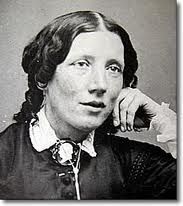 As mentioned before, it was while seeing the activity at the slave market—while staying at the Cornstalk Hotel—that Harriet Beecher Stowe became compelled to write “Uncle Tom’s Cabin.” (There were other slave markets; this was the largest.) But nothing is black and white. Well, some were legally white, and some were legally black. But there was also a curious system of colors, and names that more or less went with NOLA more than any other place. Because in this same space where human souls were bought and sold, balls often went on. Quadroon balls. So, how does one become a quadroon? I’ll begin at the curious beginning of color-coding that went on at the time. First, if you were of mixed race, you were a femme de colour or gen de colour. Now, if you were half white and half black, you were a mulatto. If you were half mulatto and half black, you were a griffe. If you were mulatto and white, you were a quadroon. See? Easy.
As mentioned before, it was while seeing the activity at the slave market—while staying at the Cornstalk Hotel—that Harriet Beecher Stowe became compelled to write “Uncle Tom’s Cabin.” (There were other slave markets; this was the largest.) But nothing is black and white. Well, some were legally white, and some were legally black. But there was also a curious system of colors, and names that more or less went with NOLA more than any other place. Because in this same space where human souls were bought and sold, balls often went on. Quadroon balls. So, how does one become a quadroon? I’ll begin at the curious beginning of color-coding that went on at the time. First, if you were of mixed race, you were a femme de colour or gen de colour. Now, if you were half white and half black, you were a mulatto. If you were half mulatto and half black, you were a griffe. If you were mulatto and white, you were a quadroon. See? Easy.
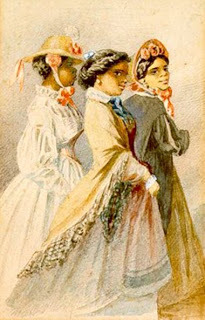
Many blacks and mulattos and quadroons and griffes in New Orleans were free men or free woman. As such, they sometimes owned slaves as well. Quadroons were frequently prized as mistresses. Now, that’s not hard to comprehend if we look at the multitude of Americans of mixed race—they are some of our most beautiful people. But it was a hard and confusing social life. Some men of color might do business with their white neighbors—and yet never sit down to a meal with them. Just as some men were cruel and wickedly beat their slaves and wrenched families apart, some were kind, and saw their slaves as part of their own extended families with all on the plantation or in the home working for the best of everyone there. Oh, I forgot one of the other colors in the palette—you could be rouge! Yes, sounds lovely. That’s what you were if you were mixed with Native American blood. So much that we look at in the past is so horribly ugly. But, sadly, we can never erase the past. To forget history is so wrong. In the words of the great philosopher George Santayana, “Those who cannot remember the past are condemned to repeat it.” We need to learn from the past. Now, I’m not saying that things are always rosy-cheery in New Orleans or that old prejudices don’t raise their ugly heads now and then. But I am saying that it can be one of the most wonderful cities in the world because it’s certainly one of the most mixed cities in the world. I can tell you that my friends there cover just about every shade in that palette I was talking about. They are of black, white, Spanish, French, Italian, African, you-name-it
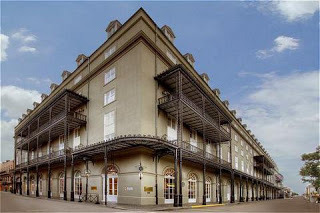 descent.
descent.But back to the slave market. It’s gone. After the war, it was used for a while by the state legislature. By 1915, it was abandoned and a haven for rats and roaches and . . . yes. It was condemned. Today, the beautiful Omni Royal Orleans stands where it once stood. And guests of every color in the palette are welcomed and enjoy the hotel’s hospitality. But back when the Civil War fell upon the country, New Orleans was the biggest city in the South. It had those horrible slave markets. But, to a Union fighting to keep the country together, it was most important as the main port along the mighty Mississippi. The river was a life line for Confederate troops. It was imperative that the Union take New
 Orleans. Admiral Farragut set out to win the city; gunboats sailed the Mississippi and by the end of April, 1862, New Orleans was forced to surrender.
Orleans. Admiral Farragut set out to win the city; gunboats sailed the Mississippi and by the end of April, 1862, New Orleans was forced to surrender. It would remain in Union hands for the duration of the war. The General who would become known as “Beast” Butler would wield military rule with a brutal hand. His worst offense was issuing Butler’s General Order #28. It was wordy, but basically it said that any woman who insulted a Union officer was to be treated as if she were a prostitute. That brought about a lot
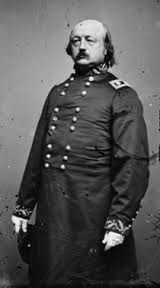 of anger—from the North and South! He was also known as “Spoons” Butler—that was for all the looting the man did.
of anger—from the North and South! He was also known as “Spoons” Butler—that was for all the looting the man did.I guess the thing to really remember here is this—the good, the bad, and the ugly came on both sides. It’s easy today to wonder how anyone could have condoned such an inconceivable notion as slavery. But, back then, it was as old as the Bible, as old as time. Just as Union generals left the Federal military to join their states—they were Louisianans, Virginians, Georgians, Floridians, etc., first—loyal to their states before their Federal government. We still hear a lot about states’ rights, and they remain incredibly important in our politics today. But if you are a Civil War buff like me—intrigued, like me, by some of the incredible, honorable and dedicated men and women of the time—there are some sites you can visit. First, to me, and the most gut-wrenching, is to stand on that corner and imagine the human misery of the slave market. Then, you can check your times and head on over to see the Museum of the Confederacy. (See previous blog!) To view the forts that were important, you have to travel a bit out of the city. Fort St. Philip is only accessible by boat or helicopter, is privately owned, and in a bad state of disrepair. Fort Jackson, however, can be visited, though it, too, sustained heavy damage during the summer of storms. Check with any of NOLA’s fine tour companies if you want to see it. Chalmette Battlefield is a great day trip for history buffs. While the Union pretty
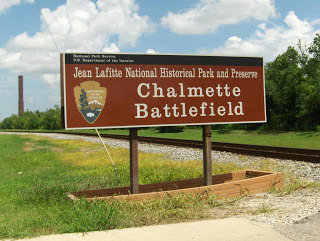 much sailed by the Chalmette defenses during the taking of New Orleans and you’ll learn more about the War of 1812, excellent guides who love history can make you see just how important the city of New Orleans was to the North—and just how they maneuvered to take the city.
much sailed by the Chalmette defenses during the taking of New Orleans and you’ll learn more about the War of 1812, excellent guides who love history can make you see just how important the city of New Orleans was to the North—and just how they maneuvered to take the city.I love New Orleans for all its wonderful colors. While the past was sometimes horribly ugly, it leads to our present, and a city as beautiful as all the shades in a rainbow.
Published on May 14, 2013 16:38
May 11, 2013
30 Days of Why I Love New Orleans - Day 26
Sometimes, You’ve Just Got to Sleep!!And you can find some wonderful places to do so . . . . Writers for New Orleans naturally takes place at one of my favorite places to stay, but that
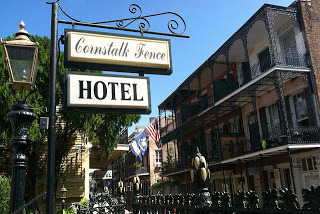 comes up last, so for now, I’ll mention a few other places that are great—all depending on what you’re looking for!
comes up last, so for now, I’ll mention a few other places that are great—all depending on what you’re looking for!Remember, it would be almost as impossible to list all the wonderful bed and breakfast establishments and hotels that can be found in New Orleans as it would be to tell about all the bars.
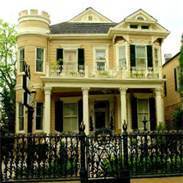 People come and stay in many different places—and fall in love with different places for different reasons. I’ll just talk about a few—you may have already discovered a few gems on your own that I know nothing about.
People come and stay in many different places—and fall in love with different places for different reasons. I’ll just talk about a few—you may have already discovered a few gems on your own that I know nothing about.Maybe I’m a romantic at heart because my favorite actual B and B hotel is found easily in a well-travelled section of the French Quarter, at 915 Royal Street.
It’s certainly one of the prettiest bed and breakfast hotels in the French Quarter and it’s called the Cornstalk. I think I fell in love with it when I was five and first saw it, walking hand in hand with my dad.

The home was actually built for Judge Francois Xavier Martin, who happened to be the author of the first History of Louisiana. He was also Chief Justice of the Louisiana Supreme Court. There had been homes on the exact spot before but the city had been ravaged by major fires and it was during the early years of the 1800s that Judge Martin had the house constructed. He then lived there from 1816 to 1826. He was the one who had the house built—but it was Dr. Joseph Secondo Biamenti who had the famous cast iron fence constructed and the reasoning comes with a beautiful and romantic story. Joseph loved his wife; his wife was from Iowa. Joseph
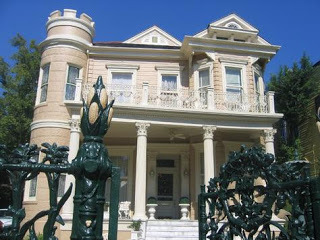 didn’t want her to be homesick for the waves of corn that grew in her native state and so he had the fence constructed in 1856.
didn’t want her to be homesick for the waves of corn that grew in her native state and so he had the fence constructed in 1856.They say that it was at the Cornstalk that Harriet Beecher Stowe came to stay—and she was supposedly moved to write “Uncle Tom’s Cabin” because of that stay when she saw the nearby slave markets. Politicians, movie stars, and other celebrities have stayed here, entranced by the beauty of the place.The rooms are spacious. The hospitality is wonderful. If you do stay, I can guarantee that people will watch you when you return to your home away from home, a little envious that you’re going through the gate and into the house!Right next door to the Cornstalk, you’ll find the Andrew Jackson Hotel. I haven’t actually
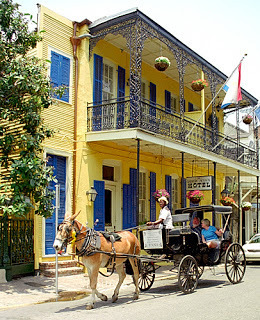 stayed here; friends have. It’s historic, of course—on this site, Andrew Jackson, hero of the Battle of New Orleans, was indicted for contempt and a few other charges. Jackson, being Jackson, dealt with the situation. The hotel is small and the rooms can be on the small side—it’s a great place for someone who wants some history and a location that’s right on Royal and just a block off Bourbon—very near Pat O’Brien’s, Lafitte’s, and more magical wonders of Bourbon Street. It’s also a short hop over to Jackson Square. Definitely a plus for those who don’t want to wallow in their room and would be happy with a nice bed in the midst of a lot of action.
stayed here; friends have. It’s historic, of course—on this site, Andrew Jackson, hero of the Battle of New Orleans, was indicted for contempt and a few other charges. Jackson, being Jackson, dealt with the situation. The hotel is small and the rooms can be on the small side—it’s a great place for someone who wants some history and a location that’s right on Royal and just a block off Bourbon—very near Pat O’Brien’s, Lafitte’s, and more magical wonders of Bourbon Street. It’s also a short hop over to Jackson Square. Definitely a plus for those who don’t want to wallow in their room and would be happy with a nice bed in the midst of a lot of action.I’ll mention two French Quarter biggies right now; the Omni Royal Orleans and the Royal Sonesta. I’ve stayed at both and enjoyed the service and ambiance of both. The Royal Sonesta enjoyed a major overhaul after the summer of storms—it’s where to be if you really want in on the action. It’s right at 300 Bourbon Street. Sometimes, if you’re a light
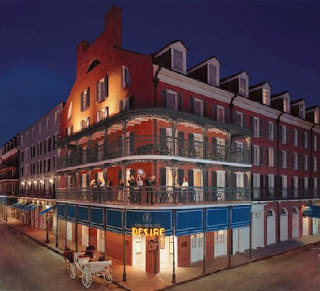 sleeper, they’re not the perfect place to be if you’re tired and fond of sleep before the wee hours—depending on room location. Around festivals, they can demand—and get—some pretty steep room rates. They offer lovely rooms, a nice pool area, and many big-hotel pluses. The Omni has wonderful ghosts to delight you—elegant stairways, gorgeous ballrooms. I spent a New Year’s Eve there once that was absolutely delightful. My little nephew was there so we went for the entertainment and music and then family celebration up in the room. A two-year-old in New Orleans for New Years, you say? Yes. Jugglers, clowns, musicians, improve on the square, human statues . . . and then, at the Omni, we watched a side street from a balcony and tossed beads to partiers as they headed in for the night. The rooms aren’t
sleeper, they’re not the perfect place to be if you’re tired and fond of sleep before the wee hours—depending on room location. Around festivals, they can demand—and get—some pretty steep room rates. They offer lovely rooms, a nice pool area, and many big-hotel pluses. The Omni has wonderful ghosts to delight you—elegant stairways, gorgeous ballrooms. I spent a New Year’s Eve there once that was absolutely delightful. My little nephew was there so we went for the entertainment and music and then family celebration up in the room. A two-year-old in New Orleans for New Years, you say? Yes. Jugglers, clowns, musicians, improve on the square, human statues . . . and then, at the Omni, we watched a side street from a balcony and tossed beads to partiers as they headed in for the night. The rooms aren’t
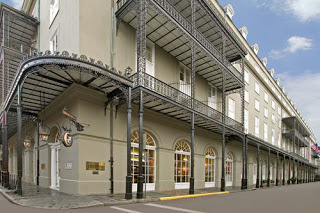 cookie-cutter; many are very different so you might ask about the room you’re renting. A friend and I switched places; she wanted the massive bed up on a little platform while I loved my two-story with a little loft. The entrance is 621 St Louis Street, but you can exit through the bar and Rib Room Restaurant and be on Bourbon. It’s one of my favorite spots and if you don’t stay, you may find yourself here on a ghost tour anyway.
cookie-cutter; many are very different so you might ask about the room you’re renting. A friend and I switched places; she wanted the massive bed up on a little platform while I loved my two-story with a little loft. The entrance is 621 St Louis Street, but you can exit through the bar and Rib Room Restaurant and be on Bourbon. It’s one of my favorite spots and if you don’t stay, you may find yourself here on a ghost tour anyway.People do raise children here and when you’re with children, just check out what the offerings are. They can be awesome—even for the little ones!Moving from the big in the midst of the Quarter over to the outskirts, I’ll mention a couple of chains; a massive Marriott with a view from the top that is certainly unmatchable, a Sheraton right across the Street on Canal, and a Holiday Inn, on the edge of the Quarter as
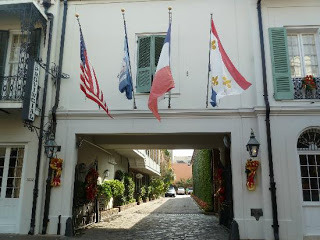 well. They often offer specials. Both the Sheraton and Marriott are often used by conventions—since they can accommodate them!
well. They often offer specials. Both the Sheraton and Marriott are often used by conventions—since they can accommodate them! Another favorite of mine is the Hotel Provincial at 1024 Chartres Street. It’s a conglomeration of historic buildings and offers large rooms and suites furnished beautifully with old Southern antiques and reproductions. There was a hospital here during the Civil War and the entire property is supposed to be haunted. They have a pool and lovely courtyards and the staff are some of the most welcoming and nicest people I’ve come across—in a city where everyone tends to be really nice. There are two Ws to be found in the area; one is nice and big and close to Harrah’s. (333 Poydras) The other is on Chartres Street as well and this hotel is really charming. The building is, of course, historic. It offers an absolutely charming and large courtyard with comfy seating and lanterns and is really lovely. I highly recommend it. 316 Chartres Street.
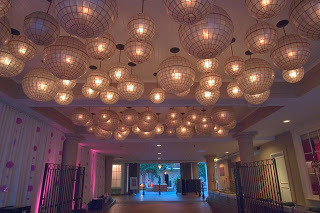 (Across from my favorite NOLA tea shop! Around the corner from the Monteleone. A block or so from K. Paul’s.)
(Across from my favorite NOLA tea shop! Around the corner from the Monteleone. A block or so from K. Paul’s.)2127 Prytania offers up the gorgeous Magnolia Mansion—no children allowed, but they actually offer a “haunted” package. It’s popular with weddings and showers and celebrations—and those looking for the ‘haunted,’ of course. The street car can get you around. It like many of the wonderful bed and breakfast places that are in the Garden District, are historic and beautiful and well worth the stay. Just remember, you won’t walk out and take a two or three minute walk to the center of the French Quarter.
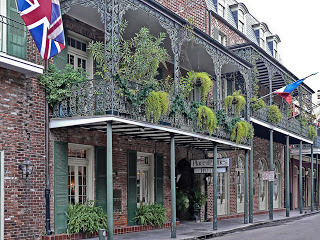 Just a few more to mention—Place d’Armes in the Quarter offers easy access to many venues; it’s at 625 St. Ann Street and it’s fun and historically charming, though not as plush as some of the others and you may hear your hotel mates doing some celebrating through the night. But it’s friendly and fun and we’ve stayed or had family members there several times. The Nine-O-Five Royal is at 905 Royal Street—and they’re fun and funky and convenient. They advertise that the building was erected in the gay nineties and has no particular history—I love their sense of hey, we’re here, and we’re in a darned good spot.There are so many treasures in the city! It’s impossible to get to a tenth of a tenth of them. I’ve given you just a few, but I really didn’t mention any of the incredible mansions in the Garden District . . . .So, the thing, figure what means most to you—price, location, history!—and find the perfect home for you in the Big Easy!
Just a few more to mention—Place d’Armes in the Quarter offers easy access to many venues; it’s at 625 St. Ann Street and it’s fun and historically charming, though not as plush as some of the others and you may hear your hotel mates doing some celebrating through the night. But it’s friendly and fun and we’ve stayed or had family members there several times. The Nine-O-Five Royal is at 905 Royal Street—and they’re fun and funky and convenient. They advertise that the building was erected in the gay nineties and has no particular history—I love their sense of hey, we’re here, and we’re in a darned good spot.There are so many treasures in the city! It’s impossible to get to a tenth of a tenth of them. I’ve given you just a few, but I really didn’t mention any of the incredible mansions in the Garden District . . . .So, the thing, figure what means most to you—price, location, history!—and find the perfect home for you in the Big Easy!
Published on May 11, 2013 15:56
May 9, 2013
30 Days of Why I Love New Orleans - Day 25
Vampires!!
It’s late at night, darkness has fallen, and an unwary woman walks cobblestone streets. A
 streetlight flickers . . . she looks back in fear. Shadows race eerily in the night; there’s a strange sound of movement on the wind.
streetlight flickers . . . she looks back in fear. Shadows race eerily in the night; there’s a strange sound of movement on the wind. And then the vampire strikes . . . .
Or, perhaps, he’s just a handsome, rakish, and devilish sort of rogue, and he’s said and done all the right things in a bar and the young woman is his willing victim.
Not that vampires practice sexual discrimination in any way. Good blood is good blood.
New Orleans is, of course, a city
 rich in vampire lore, thanks to premier vampire-writer of today, the lovely and talented Anne Rice.
rich in vampire lore, thanks to premier vampire-writer of today, the lovely and talented Anne Rice. But before Anne Rice, even before Bram Stoker and Dracula, vampire tales and legends were known around the world. In every country those legends are a bit different. Often what people believed can now be explained by science.
Perhaps New Orleans, a city with such a mixed, colorful, and even violent history, it might just be natural that legends take root and with a bit of a mix from fact and fiction.
The actual “history” of the vampire stretches way back beyond Bram Stoker’s Dracula; some believe that our modern concept may have had roots in ancient Egypt when a
 blood-drinking demon was evoked. Others think of the lamia of the still-ancient world, a crone or a witch who came in the night to drink the blood of babies.
blood-drinking demon was evoked. Others think of the lamia of the still-ancient world, a crone or a witch who came in the night to drink the blood of babies. Perhaps another concept of vampirism might have come from the infamous Countess Bathory—though she didn’t drink blood, she bathed in it.
Our strongest modern connection, however, probably does come from Vlad Tepes, Dracula, or “Son of the Dragon.” Vlad Tepes was—we know through historical records—a brutal ruler who set his enemies on stakes to die slowly and in excruciating pain. But, then again, he was born in the midst of a violent world. We all have different ways of looking at things. To some, he was a blood-thirsty Dracula. To others, he was a national hero who led his people to victories unknown before his reign.
During the late Dark Ages and Medieval eras, superstition ruled the world. It was easy to imagine that bad things happened because of witchcraft—and that the dead walked because the evil of Satan had somehow permeated their mortal flesh. In Europe,
 plague and disease swept whole communities. People died of tuberculosis, spitting blood.
plague and disease swept whole communities. People died of tuberculosis, spitting blood. And, of course, they were buried prematurely. So often that by Victorian times, coffins offered a window for the face—and many were buried with coffin “alarms,” ropes within the coffin to ring a bell should they find that they awoke—six feet under and staring at a wall of dirt.
European fears and superstitions travelled to the New World from Europe and we, too, feared death and the coming of the vampire. Mercy Brown was one of the best-documented incidents in the United States having to do with the exhumation and destruction of a corpse to prevent vampirism. Poor Mercy died in 1892. Her mother had died in 1888, then her oldest sister two years later, and then her brother, Edwin, sickened.
But poor Mercy died next. Neighbors were terrified—one of the family members buried had
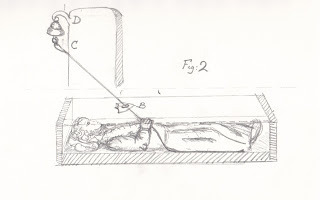 to be a vampire—rising from the dead to kill and kill again. There were rumors that the Brown family members could be seen walking late at night in the mists that fell upon Rhode Island.
to be a vampire—rising from the dead to kill and kill again. There were rumors that the Brown family members could be seen walking late at night in the mists that fell upon Rhode Island. The family members were exhumed. The others had decayed. Mercy looked as if she had just lain down for a nap. There was blood in her heart.
The family had wasted away from “consumption” or tuberculosis, but little was known about the disease at the time and nothing could be done to stop it. Mercy had been buried in frigidly cold ground. That wasn’t really given much thought. She had her heart cut out and burned. The ashes were mixed with water; Edwin drank them. No good—Edwin died two years later.
The custom of “sitting up with the dead” became very popular and remains popular. Sitting up with the dead for twenty-four hours means that someone can watch over the corpse—and make sure that it’s showing no signs of coming back to life. This is still practiced fairly frequently in NOLA—out of respect, really, more so than a fear of the dead coming back to life. It’s a nice custom, even if it did begin strangely. All over the world, we “wake” our dead. Fear? Or tender care?
Frankly, I have friends in New Orleans who are vampires. Not blood-drinking vampires, though cults of blood-drinkers do exist in NOLA—as well as elsewhere around the world. Most of the time, these are cults of consenting adults who draw each other’s blood or arranged to have blood drawn and then share the drinking.
My friends tend to be “spiritual” vampires; they “drink” energy and force from the air, try to drink in negative energy around them and change it into something better. Can this truly be a talent? I don’t know. I know they’re nice people.
“Porphyria” is a real disease that some suffer from. They constantly need transfusions. Therefore, those suffering must “drink in” the blood of others.
Now, of course, there are those who think they are vampires—or kill as if they were
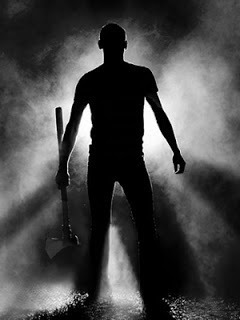 vampires. The “Axman” murders that befell New Orleans from May of 1918 to October of 1919. Nine people were brutally killed, and there were rumors that the Axman—who killed people with an axe—was a vampire, seeking their blood. There’s another story you’ll hear that people have a difficult time verifying and the story changes depending on when you hear it. In 1984, around the city, nine bodies were found with their throats ripped out and almost no blood at all found at the scene of each murder.
vampires. The “Axman” murders that befell New Orleans from May of 1918 to October of 1919. Nine people were brutally killed, and there were rumors that the Axman—who killed people with an axe—was a vampire, seeking their blood. There’s another story you’ll hear that people have a difficult time verifying and the story changes depending on when you hear it. In 1984, around the city, nine bodies were found with their throats ripped out and almost no blood at all found at the scene of each murder. Two young women were killed in a like manner in 1978. Throats ripped up, bodies almost bloodless, the scenes of the crimes almost bloodless as well.
What has really happened in New Orleans as far as vampires go?
Whether you’re a believer, a person with a scientific mind who likes to put the pieces together, or simply one for a good tale or two, I suggest the vampire tour in NOLA. The past and the present collide; you get to hear tales of possible vampirism, possible mental illness—and the literary world!
NOLA has a feel, just like the fantastic faded elegance of her past. It’s poignant and nostalgic, and the old and new beneath the moon just might make you a believer.
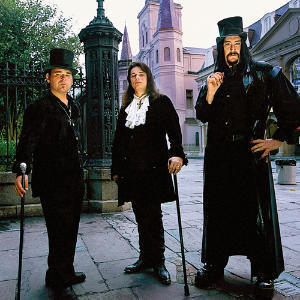
And it’s NOLA. You can stop for a bloody Mary somewhere along the way . . . .
Published on May 09, 2013 12:47



